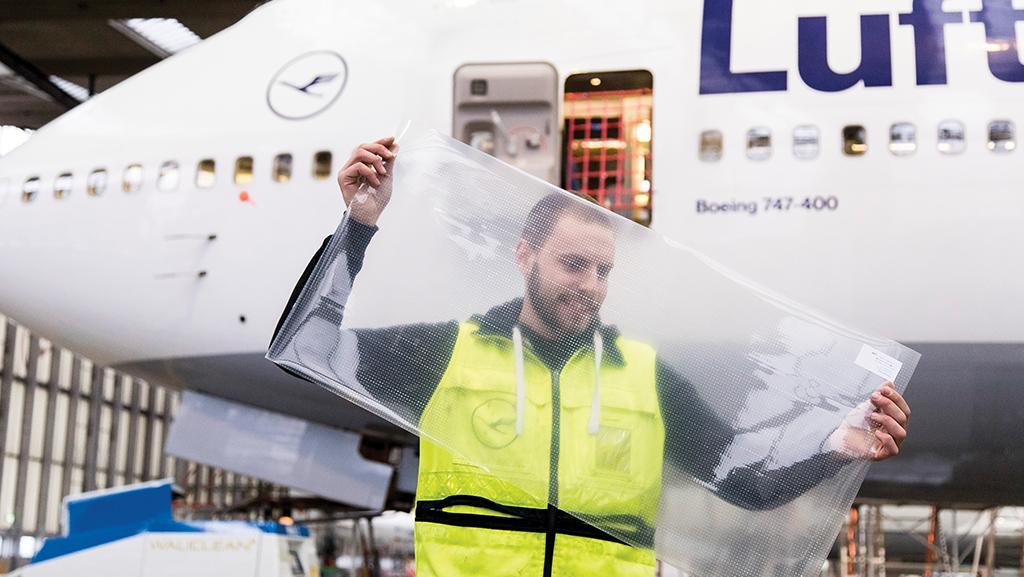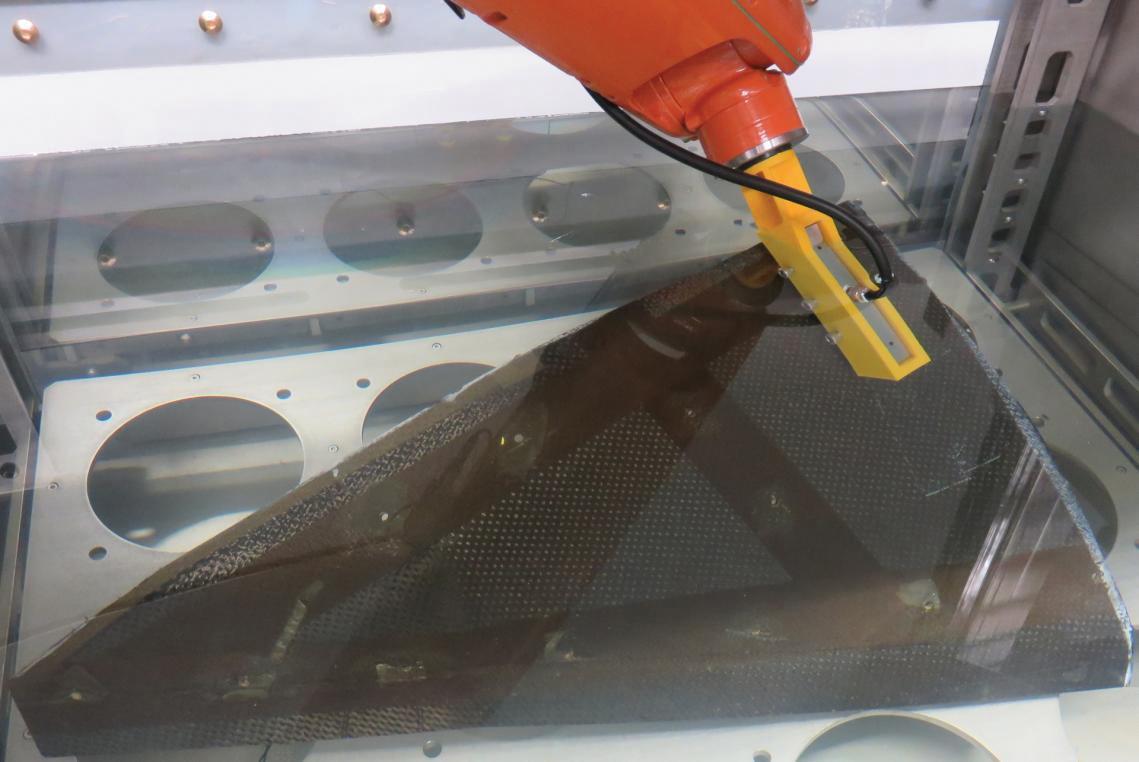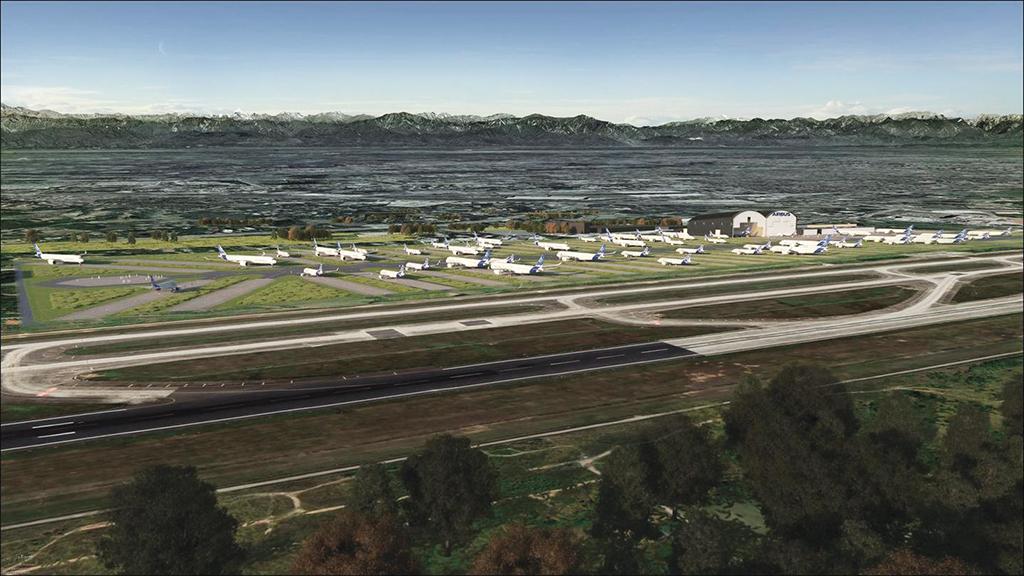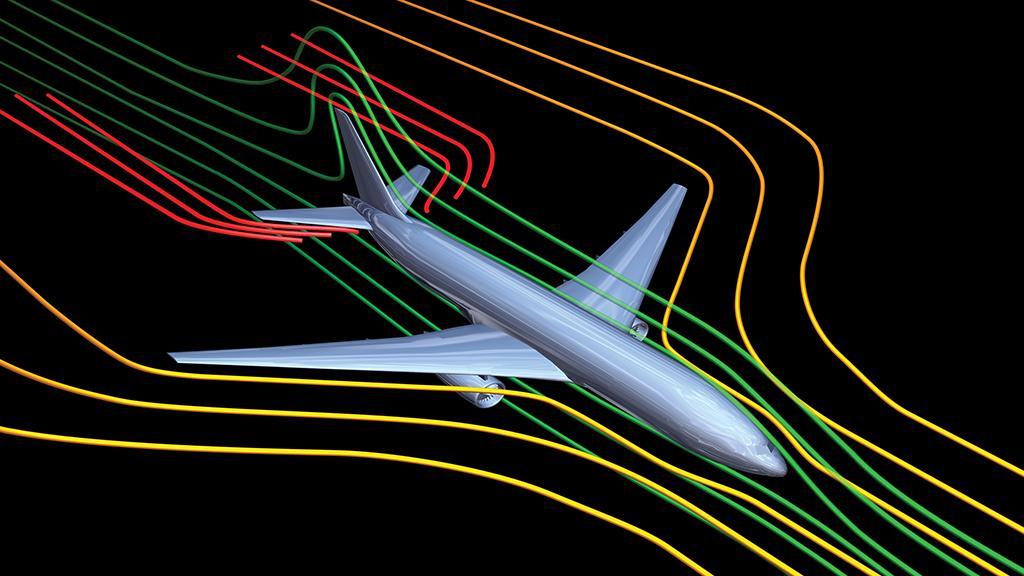Gallery: Aiming To Improve Sustainability With New Aftermarket Initiatives
April 13, 2022
Sharkskin-Inspired Innovation
Lufthansa Technik (LHT) and coatings specialist BASF have developed a new surface technology for aircraft that is designed to optimize aerodynamics and reduce fuel usage and carbon dioxide emissions. Called AeroSHARK, the surface technology uses riblet films that mimic the properties of sharkskin, which has favorable flow characteristics. Credit: Lufthansa Technik

Sustainable Aviation Fuel Testing
MTU Maintenance and JetBlue Airways recently began a partnership to test and gather data on the use of sustainable aviation fuel (SAF). MTU is performing test runs with SAF on IAE V2500 engines powering JetBlue’s fleet at its Hannover, Germany, facilities, starting with a 10% SAF blend and potentially expanding up to a 50% SAF blend, which is the current regulatory limit. Credit: MTU Maintenance

Hydrogen-Electric Retrofit Projects
A slew of airlines and OEMs are signing deals with startups to partner on retrofit projects that would convert their aircraft to hydrogen-electric powertrains. Alaska Airlines, Connect Airlines, Icelandair and United Airlines have all signed agreements with companies such as Universal Hydrogen and ZeroAvia to retrofit their turboprop and regional aircraft for hydrogen-electric propulsion systems. Credit: ZeroAvia

Automated Composite Parts Inspection
Fokker Technologies is researching how automated ultrasonic nondestructive testing (NDT) could be used to increase the number of aircraft components and spares that can be made using composite materials, which reduces weight and helps to improve aircraft efficiency and reduce emissions. Credit: Clean Aviation

Installing Hangar Solar Panels
Two MROs in the Asia-Pacific region are turning to solar power to help make their operations more sustainable. In late 2021, HAECO began the installation of approximately 6,000 solar panels on the roof of its hangars at Hong Kong International Airport. The system will be equipped with sensors and Internet of Things technology to continuously monitor and measure its performance. Credit: HAECO

Aircraft Recycling Initiatives Evolving
Tarmac Aerosave recently partnered with Airbus to establish what it says will be the first sustainable aircraft life-cycle service center in China. Based at Chengdu Shuangliu International Airport, the Airbus Lifecycle Services Centre will target both Asia-Pacific and global customers. Airbus says that the joint venture will be the only operation in China that covers the full range of aircraft and engine life-cycle services, including conversions, dismantling, recycling, disposal and used serviceable material distribution. Credit: Airbus

VD Gulf’s Ecological Strategy
Middle East MRO VD Gulf launched its new Ecological Strategy in February, which aims to reduce waste consumption by 40% and energy usage by 30% by 2030. To meet these goals, it plans to introduce processes to reduce water, paper and energy usage. VD Gulf also intends to use green packaging for parts and to segregate 80% of all waste produced at its facilities. Credit: VD Gulf

Reducing Fuel, Ice and Corrosion Waste
Canadian company FLITE Material Sciences is developing surface engineering techniques to reduce drag and the formation of condensation, ice and corrosion on aircraft surfaces. Its laser surface functionalization techniques create an invisible texture on material surfaces that alters the way gases, liquids and surfaces flow over them. Credit: Adobe Stock
Take a look at how MROs, airlines and OEMs are rolling out new sustainability initiatives to reduce waste and carbon emissions.
This is an abbreviated version of an article by Lindsay Bjerregaard that appeared in Inside MRO. Subscribers can get more details about the sustainability initiatives in the full article.